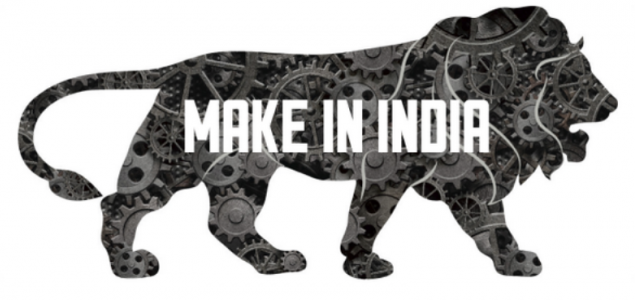
Mobile handset industry in India has registered a Compound Annual Growth Rate (CAGR) of over 30 percent. With a turnover of Rs 75,000 crore in fiscal 2014, the Indian mobile phone industry is slated to reach Rs 100,000 crore in 2015. Smart phones account for about 25 percent in numbers but contribute three times as much in turnover.
New initiatives taken by the Government are likely to push this import subsidized market to make India a manufacturing hub.
According to KPMG, components for mobile handsets manufactured in India are mostly low valued like casing, plastic box and packaging, which accounts for less than 5 percent of the bulk of the price. Even simple components like keyboards have to be imported.
Big manufacturers like Samsung, Apple, Huawei, Xiaomi, Lenovo, Microsoft, etc. occupy smartphone market share in almost every region — both domestic and global and account for 75 percent of the mobile handsets sold. Regional players such as Micromax, Karbonn, Intex, Lava and Maxx, operate in restricted market segment and share 25 to 35 percent of the market. They hope to increase their share to 50 percent in 2015. Some Chinese brands are available at even lower prices, and add to competitiveness in the market.
World’s second-largest mobile market with 21 crore smartphone users, India has failed to spawn a manufacturing hub for handsets. While a smart phone attracts a duty of around 12.5 percent, its components can be imported at just 1 percent. The duty concession of 11.5 percent was enough to discourage a rush to make in India. Mobile manufacturing companies, according to ICA, were trying to take advantage of this massive skew in the duty structure, “it makes sense for them to assemble in India”, as India is still in a growth phase, and offers the volumes that are able to justify investment in a manufacturing or assembly unit here.
Government has now woken up and removed this anomaly to streamline. This has evened out the advantage import.
With an eye on high end smart phone users in country, Samsung has announced to start production of Galaxy S6 and Galaxy S6 Edge flagship smart phones in India. HTC is to follow suit. Huawei is aiming for big FDI in India this year. A Taiwanese company plans to manufacture handsets priced in the range of INR 10,000 ($160) to INR 25,000 ($390). Global mobile phone players such as Foxconn have committed to manufacture in India in a big way. Karbonn and Micromax, the biggest domestic mobile phone companies, import nearly their entire requirement from China. These two, now, are setting up their manufacturing units in the country. Booming Indian telecommunications market has now started attracting investment.
Of course, India turning into a manufacturing hub to cater to its large domestic demand is not a very difficult proposition, especially as many global companies want to hedge their exposure to China. Considering the number of mobile subscribers, India has the potential of becoming a manufacturing center for mobiles. These two factors can lead the process with right policies in place.
It is worthy to learn a lesson or two, from other countries. China, for instance, offered tax incentives to foreign companies tying up with Chinese firms. Also, foreign companies transferring technology were offered tax concessions of up to 50 percent for three years. The country set up science and technology parks, where companies were given a bevy of tax concessions and exemptions, but made it mandatory for them to transfer technology and detailed technical documentation, even train their Chinese staff so that they could design equipment independently. Taiwan offered to subsidize 30 percent of the expenses incurred by companies on developing high-tech products.
The Indian government, though belatedly, is trying to get its act together. After over six years of wooing companies to set up a chip fabrication plant and various aborted attempts, the Union Cabinet this year cleared two proposals. One led by the Jaypee group for setting up fabs with an investment of over Rs 50,000 crore. It has agreed to provide incentives, including a 25 percent subsidy on capital spending, tax breaks and interest-free loans. This may not be enough for the country to come anywhere close to China, which already has over 100 such chip plants; or Taiwan, where the government initially supported and then transferred technology to private players. After all, none of the global leading fab players with large capacities showed interest in bidding for the Indian offer. Even the big Indian corporate names stayed away. Several big names say the incentives are not good enough – China not only subsidizes these facilities but takes care of the losses too.
The opportunity however is right. Equalization of Excise Duty and Import Duty is first step. Issues related to VAT need be sorted out early. There are advantages attached to the government’s ‘Make in India’ manufacturing push. Incentives like cash back on investments in this sector, and tax exemptions along with preference for domestically manufactured electronic products for government procurements are encouraging signals. All conditions are good enough for the companies to be more than interested. Incentives in right quantum need to be added to encourage now domestic production. No wonder most Indian mobile phone ‘manufacturers’, who make the bulk of their phones in China, as well as their multinational rivals, are queuing up for moving their assembly lines to India.
The mobile sector with big investment coming in, promises a big potential to accelerate growth and drive economy faster through export. A real shot in arm for Make in India campaign.
Ashutosh Pandey





